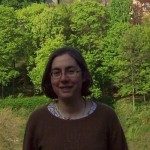Link to Pubmed [PMID] – 25531967
Future Med Chem 2014;6(18):2029-56
BACKGROUND: An in silico mechanism-of-action analysis protocol was developed, comprising molecule bioactivity profiling, annotation of predicted targets with pathways and calculation of enrichment factors to highlight targets and pathways more likely to be implicated in the studied phenotype.
RESULTS: The method was applied to a cytotoxicity phenotypic endpoint, with enriched targets/pathways found to be statistically significant when compared with 100 random datasets. Application on a smaller apoptotic set (10 molecules) did not allowed to obtain statistically relevant results, suggesting that the protocol requires modification such as analysis of the most frequently predicted targets/annotated pathways.
CONCLUSION: Pathway annotations improved the mechanism-of-action information gained by target prediction alone, allowing a better interpretation of the predictions and providing better mapping of targets onto pathways.

